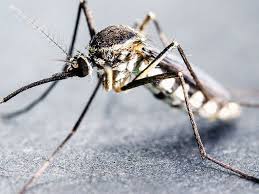
Iliyasu Abdullahi Bah
The onset of the heavy rainy season has triggered an alarming public health crisis across Nigeria’s Northeast, with a dramatic surge in malaria cases. From overcrowded urban clinics to overstretched rural health facilities, medical personnel are reporting a sharp influx of patients presenting with high fever, chills, and body aches — severe symptoms of the deadly mosquito-borne disease.
Health experts say the connection is direct and well understood. According to Isaac Henna, writing in Vector and Parasite, torrential downpours create ideal breeding conditions for the female Anopheles mosquito, the primary vector for malaria. Stagnant water collects in discarded containers, clogged drains, uncovered tanks, and even footprints in waterlogged soil — all of which become nurseries for mosquito larvae. Within weeks, the insect population explodes.
This year’s outbreak is compounded by several critical factors: weak drainage infrastructure, limited access to insecticide-treated nets, and worsening economic hardship. Many families delay seeking medical care due to high costs, allowing the disease to spread unchecked.
At the Specialist Hospital in Damaturu, Aisha Mohammed, a mother of three, shared her ordeal. “My youngest son started with a fever two days ago. We have a net, but the mosquitoes are too many. I had to borrow money to bring him here. I fear for my other children,” she said.
Dr. Adamu Jaji, a physician at the clinic, confirmed the rise. “We are seeing more than a 60% increase in confirmed malaria cases compared to last month. The majority are children under five and pregnant women, who are the most vulnerable. Our biggest challenge is ensuring we have enough Artemisinin-based Combination Therapies (ACTs) to last through the season.”
In response, the Federal Ministry of Health, in collaboration with international partners including the World Health Organization (WHO), UNICEF, and the Malaria Consortium, has activated its seasonal response plan. This includes accelerating the distribution of long-lasting insecticidal nets (LLINs), launching radio and community campaigns to promote preventive measures, and urging families to seek treatment within 24 hours of symptoms.
In several states, health workers have begun mass drug distribution of Seasonal Malaria Chemoprevention (SMC) for children aged 3–59 months — a proven intervention to prevent infections during peak transmission months.
Public health specialist Garba Habu stressed the need for collective responsibility. “Government cannot do this alone,” he warned. “We need every household to take action — clear your gutters, cover your water containers, and ensure every family member sleeps under a treated net every night. Prevention is far more effective and less costly than treatment.”
As the rains continue, the region waits anxiously, hoping that government, health workers, and communities can work together to stem the annual tide of sickness and protect its most vulnerable citizens.
